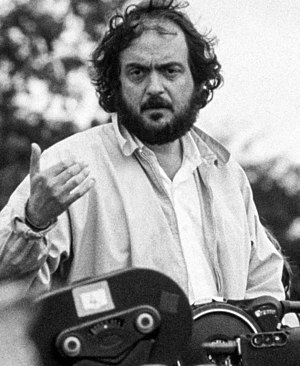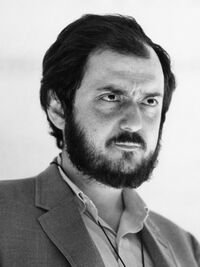Stanley Kubrick
Relevance
Took photographs that Morrissey would use as backdrops and a single cover.
See also: Rocky Graziano
Photographer
Wikipedia Information
 |
Stanley Kubrick (; July 26, 1928 – March 7, 1999) was an American film director, screenwriter, producer, and photographer. Widely considered one of the greatest filmmakers of all time, his films were nearly all adaptations of novels or short stories, spanning a number of genres and gaining recognition for their intense attention to detail, innovative cinematography, extensive set design, and dark humor. Born and raised in New York City, Kubrick was an average school student but displayed a keen interest in literature, photography, and film from a young age; he began to teach himself all aspects of film producing and directing after graduating from high school. After working as a photographer for Look magazine in the late 1940s and early 1950s, he began making low-budget short films and made his first major Hollywood film, The Killing, for United Artists in 1956. This was followed by two collaborations with Kirk Douglas: the anti-war film Paths of Glory (1957) and the historical epic film Spartacus (1960). In 1961, Kubrick left the United States due to concerns about crime in the country, as well as a growing dislike for how Hollywood operated and creative differences with Douglas and the film studios. He settled in England, which he would leave only a handful of times for the rest of his life. In 1978, he made his home at Childwickbury Manor, which he shared with his wife Christiane, and which became his workplace where he centralized the writing, research, editing, and management of his productions. This permitted him almost complete artistic control over his films, with the rare advantage of financial support from major Hollywood studios. His first productions in England were two films with Peter Sellers: an adaptation of Lolita (1962) and the Cold War black comedy Dr. Strangelove (1964). A perfectionist who assumed direct control over most aspects of his filmmaking, Kubrick cultivated an expertise in writing, editing, color grading, promotion, and exhibition. He was famous for the painstaking care taken in researching his films and staging scenes, performed in close coordination with his actors, crew, and other collaborators. He frequently asked for several dozen retakes of the same shot in a film, often confusing and frustrating his actors. Despite the notoriety this provoked, many of Kubrick's films broke new cinematic ground and are now considered landmarks. The scientific realism and innovative special effects in his science fiction epic 2001: A Space Odyssey (1968) were a first in cinema history, and the film earned him his only Academy Award (for Best Visual Effects). Filmmaker Steven Spielberg has referred to 2001 as his generation's "big bang" and it is regarded as one of the greatest films ever made. While many of Kubrick's films were controversial and initially received mixed reviews upon release—particularly the brutal A Clockwork Orange (1971), which Kubrick withdrew from circulation in the UK following a media frenzy—most were nominated for Academy Awards, Golden Globes, or BAFTA Awards, and underwent critical re-evaluations. For the 18th-century period film Barry Lyndon (1975), Kubrick obtained lenses developed by Carl Zeiss for NASA to film scenes by candlelight. With the horror film The Shining (1980), he became one of the first directors to make use of a Steadicam for stabilized and fluid tracking shots, a technology vital to his Vietnam War film Full Metal Jacket (1987). A few days after hosting a screening for his family and the stars of his final film, the erotic drama Eyes Wide Shut (1999), he died from a heart attack at the age of 70.
